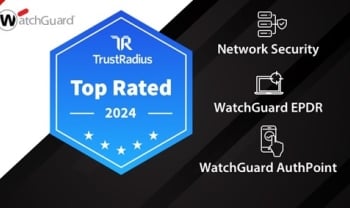4 Key Security Platforms Capabilities & Noted Shortcomings

In recent years, the cybersecurity landscape has evolved dramatically, with more advanced threats and operational challenges for organizations. Many vendors offer security platforms that address these changes and streamline security management. This post explores vital capabilities managed service providers (MSPs) should prioritize when assessing such platforms and explains some shortcomings observed in other security platforms.
Key Components of a Truly Unified Platform
1. Comprehensive Security: Covering All Fronts
Your security platform should serve as a comprehensive security solution, enabling protection and management for all your customers and across their security stack — endpoint security, network security, identity security, and vulnerability and patch management. Cybercriminals exploit vulnerabilities across these areas, from infiltrating organizations through compromised credentials to exploiting vulnerable applications to gain persistence and move laterally. A holistic defense strategy requires a security platform with built-in protection for all these areas.
2. Tight, Multi-Product Integration: The Power of Cohesion
While a variety of security tools can be beneficial, a disjointed collection of isolated solutions can lead to inefficiencies. Find a security platform that offers tight integration between its components and seamless collaboration, enhancing not only prevention and detection efficacy but also response capabilities as a single security solution. This level of integration requires specialized products that work cohesively as a centralized security system, improving your defense capabilities while reducing operational friction and overhead.
3. Prevention-First Approach: A Cost-Effective Defense
One fundamental aspect of evaluating today’s security platforms is assessing their commitment to a prevention-first approach across the entire security environment, from network to endpoints and identities. Prevention mechanisms are not only cost-effective but also efficient in protecting organizations. Prevention discourages threat actors, raising the cost of success for them and minimizes cyber risks while reducing the expenses associated with reactive cleanup efforts.
4. Platform-Wide Automation: The Modern Security Game-Changer
Automation is the driving force behind modern cybersecurity. It brings simplicity and scale to security consumption, delivery, and management. A security platform with automation at its core continually safeguards your customers’ organizations, secures user access to critical resources, thwarts advanced threats, helps you maintain endpoint security hygiene, and optimizes network performance. Automation bolsters security while lightening the workload on your team, allowing them to achieve more with fewer resources.
Security Platform Shortcomings Observed in the Market
While adopting a platform-based approach to security offers numerous advantages, it's crucial to recognize potential limitations relative to other solutions. Some common shortcomings that we have observed in competing security platforms on the market include:
- Complexity and Lack of Clarity and Control: Some security platforms can be complex to set up, configure, and manage across siloed or on-premises consoles. This complexity often results in delayed implementation, increased training and operational costs, and inconsistent or unclear visibility. WatchGuard's Unified Security Platform® architecture simplifies service delivery, providing a single, multi-tenant Cloud console, WatchGuard Cloud, that shows all customers and their security events together to streamline operations and enhance visibility. While numerous vendors offer security platforms, few provide a simplified, truly integrated view for all customers and all domains.
-
Incomplete Protection: While evaluating other security platforms, we found that most cover firewall and endpoint security, but many lack coverage in areas such as identity protection, dark web monitoring, vulnerability assessment, patch management, and zero trust application management. Moreover, some vendors treat XDR as an additional product, increasing the overall solution cost.
WatchGuard's Unified Security Platform architecture offers comprehensive protection across the entire network and attack lifecycle. This includes a prevention-first approach with continuous attack surface reduction practices like network traffic analysis, including encrypted data, multi-factor authentication (MFA), proactive monitoring for compromised credentials, vulnerability assessment, centralized patch management, and at the endpoints, the WatchGuard’s unique Zero-Trust Application Service, which automatically classifies applications before execution to block malware and ransomware. Additionally, it includes cross-product detection and response (XDR) at no extra cost.
-
Disconnected, Disjointed Security Components: Achieving tight and seamless integration within a single security platform can be challenging for vendors attempting to integrate products not originally designed to collaborate. While many vendors offer security platforms with some integration across products, few provide security enforcement based on continuously monitoring changing contexts and suspicious or unallowed behaviors.
On the other hand, WatchGuard's products are purpose-built to work together seamlessly. For example, the combination of advanced endpoint security with MFA provides continuous risk evaluation and enforcement actions based on changes in risk posture. The tight integration between the endpoint security solution and WatchGuard Secure Wi-Fi pinpoints unfamiliar devices, devices with endpoint security misconfigurations, and those without endpoint protection, barring them from connecting to wireless networks if they don’t fulfill all security policies. These are just a few examples of powerful product combinations available within a truly unified platform.
Implementing a single security platform approach is crucial for enhancing cybersecurity. By evaluating the capabilities highlighted in this guide, MSPs can choose a solution tailored to their security and operational requirements.
Learn more about the benefits that come with integrated, multi-product solutions within WatchGuard's Unified Security Platform architecture here: https://www.watchguard.com/wgrd-resource-center/cybersecurity-power-plays-msp






